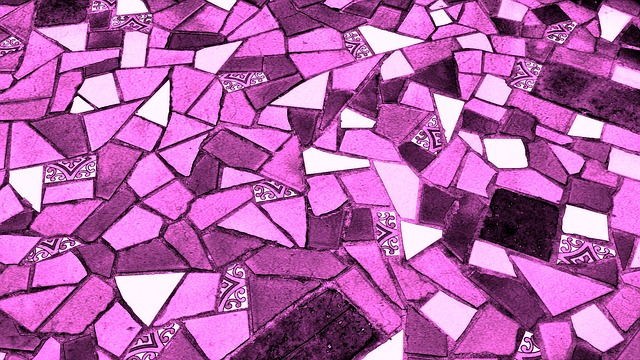
Ceramic tile flooring is a popular choice for homeowners due to its durability, versatility, and aesthetic appeal. However, to keep your ceramic tiles looking pristine and ensure their longevity, it’s crucial to follow a proper cleaning and maintenance routine. In this comprehensive guide, we will explore the essential steps and tips to keep your ceramic tile flooring in top condition.
Ceramic tiles are made from clay and other natural materials, which are then kiln-fired to create sturdy and resilient tiles. Understanding the nature of ceramic tiles is the first step in maintaining them effectively. Ceramic tiles are composed of clay, minerals, and water, making them resistant to water and stains. Understanding this composition helps you choose appropriate cleaning methods. Ceramic tiles come in various styles, sizes, and finishes. From glazed to unglazed tiles, it’s essential to identify the type of ceramic tile you have, as it affects the cleaning approach.
Ceramic tiles are known for their durability, low maintenance, and resistance to moisture. Their ability to withstand heavy foot traffic makes them an excellent choice for high-traffic areas. Despite their durability, ceramic tiles can face challenges like grout stains, surface scratches, and wear over time. Being aware of these issues helps in implementing preventive measures. Regular maintenance is key to preserving the appearance of ceramic tiles. Establish a routine cleaning schedule to prevent dirt buildup and potential damage.
Basic Cleaning Techniques
Proper cleaning is essential to keep your ceramic tile flooring looking its best. Here are some basic cleaning techniques:
Sweep or Vacuum Regularly
Remove loose dirt and debris with a broom or vacuum cleaner to prevent scratching the tile surface.
Damp Mopping:
Use a damp mop with a mild detergent to clean the tiles. Avoid using excessive water to prevent grout damage and water infiltration.
Spot Cleaning:
Quickly address spills and stains to prevent them from settling. Use a soft cloth or sponge with a pH-neutral cleaner for spot cleaning.
Avoid Harsh Chemicals:
Harsh chemicals can damage the glaze on ceramic tiles. Stick to pH-neutral cleaners and avoid abrasive substances.
Grout Maintenance:
Regularly clean and seal grout lines to prevent discoloration and mold growth. Grout maintenance is crucial for the overall appearance of your ceramic tile flooring.
Deeper Cleaning and Stain Removal
For stubborn stains and a deeper clean, consider the following techniques:
Vinegar Solution:
Mix equal parts water and white vinegar for a natural and effective cleaning solution. This is particularly useful for removing mineral deposits.
Baking Soda Paste:
Create a paste with baking soda and water to tackle tough stains. Apply the paste, let it sit, and scrub gently.
Commercial Tile Cleaners:
Choose a commercial tile cleaner specifically designed for ceramic tiles. Follow the product instructions for optimal results.
Steam Cleaning:
Use a steam cleaner for a thorough and chemical-free cleaning. Ensure your ceramic tiles are suitable for steam cleaning before attempting this method.
Grout Stain Removal:
Mix hydrogen peroxide with baking soda to form a paste for grout stain removal. Apply the paste, scrub, and rinse thoroughly.
Preventive Measures for Long-Term Maintenance
To ensure the long-term beauty of your ceramic tile flooring, adopt these preventive measures:
Use Doormats:
Place doormats at entry points to reduce the amount of dirt and debris entering your home.
Furniture Pads:
Attach felt or rubber pads to the legs of furniture to prevent scratches and scuffs on the ceramic tiles.
Avoid Impact:
Be cautious with heavy objects and avoid dropping items on the tiles to prevent cracks and chips.
Regular Sealing:
Depending on your tile type, periodically seal the tiles to maintain their resistance to stains and moisture.
Temperature Awareness:
Be cautious with extreme temperature changes, as rapid fluctuations can lead to tile expansion and contraction.
Addressing Common Issues
Despite your best efforts, you may encounter specific issues with your ceramic tile flooring. Here’s how to address them:
Surface Scratches:
For minor scratches, use a ceramic tile touch-up kit. For deeper scratches, consider replacing the affected tile.
Grout Discoloration:
Clean and reseal grout lines regularly. If discoloration persists, consider staining or regrouting the affected areas.
Cracked or Chipped Tiles:
If a tile is cracked or chipped, replace it promptly to prevent further damage and maintain a uniform appearance.
Mold and Mildew:
Address mold and mildew promptly with a mixture of water and vinegar or a commercial anti-fungal cleaner.
Water Infiltration:
Ensure that grout lines and seals are intact to prevent water infiltration. Replace damaged grout promptly.
Conclusion
Ceramic tile flooring is an investment that adds value and beauty to your home. When you understand the composition of ceramic tiles, adopt proper cleaning techniques, and implement preventive measures, you can enjoy the elegance of your ceramic tile flooring for years to come. Regular maintenance not only preserves the aesthetic appeal but also contributes to the longevity of this versatile flooring option.







